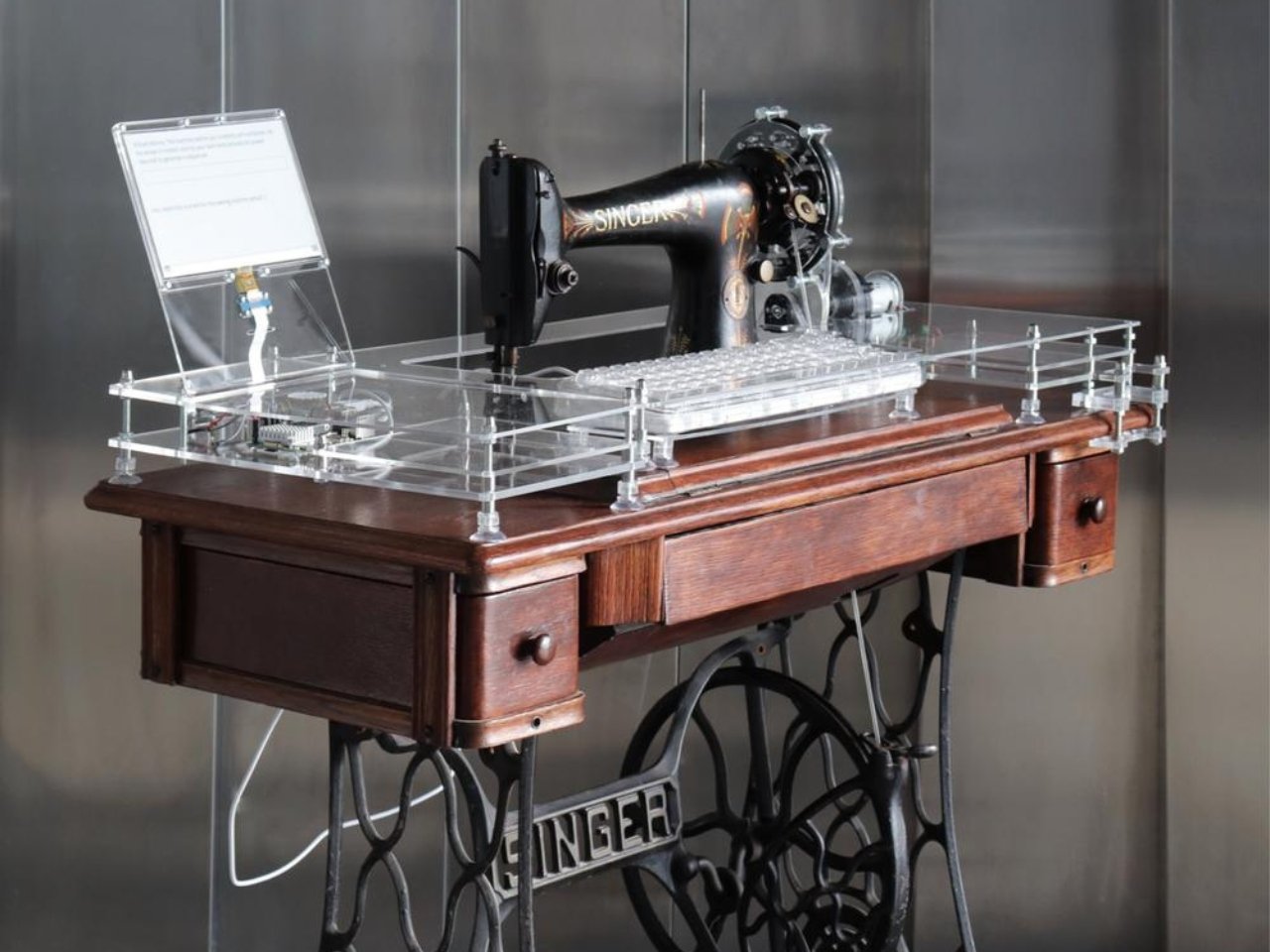Normally, when you say artificial intelligence, it would typically conjure images of sleek servers and lightning-fast processing. But designer Max Park has taken a radically different approach. His project “Prompting Nowhere” transforms a vintage Singer treadle sewing machine into a thought-provoking AI system that challenges our assumptions about technology, labor, and human values.
The project draws its name and inspiration from William Morris’s 1890 utopian novel “News from Nowhere,” which envisioned an anti-industrialist society where craft and art formed the backbone of civilization . Morris, a pioneering figure in the British Arts and Crafts movement, was not only a renowned textile designer but also a poet, author, and socialist thinker who believed people should live enriched by beauty rather than enslaved by mechanization.
Designer Name: Max Park
Park’s creation represents a fascinating fusion of old and new technologies. He modified the vintage sewing machine so that the foot pedal powers a computer instead of driving stitches through fabric. The transparent top reveals the modern computing components housed within the antique frame, creating a visual dialogue between eras of human innovation.
This AI machine is unique not just because of its form but also because of its unconventional power source. Unlike mainstream language models, Park’s system has been specifically trained on data relating to William Morris and his philosophies. The connection between manual effort and output through treadling creates a deliberate friction that stands in stark contrast to the instant gratification of contemporary AI interfaces. This physical engagement with the machine forces users to invest bodily effort in their interactions, transforming the typically passive experience of AI consumption into an active, embodied practice. Each question or prompt requires the user to pump the pedal, creating a rhythm that mirrors the craftsperson’s relationship with their tools.
Park’s motivation stems from his observation of current AI development trends, noting how the tech industry’s focus on speed, automation, and profit maximization creates an environment with completely different ideals from Morris’s envisioned world. His project asks a compelling question: if William Morris were alive today, how might he suggest we navigate the challenges posed by artificial intelligence?
The designer has also created a portable version of his concept in the form of a hand-cranked box, which he brought to discussions at the William Morris Gallery. This smaller iteration allows the AI to participate directly in conversations about Morris’s legacy and relevance to contemporary technological debates. Park emphasizes that “Prompting Nowhere” isn’t intended as a literal product prototype but rather as a work of critical or speculative design. Its purpose is to prompt reflection on how we might approach AI development differently, prioritizing human values and sustainable practices over pure efficiency and scale.
The project arrives at a crucial moment when concerns about AI’s environmental impact, labor displacement, and concentration of power are reaching mainstream consciousness. By grounding artificial intelligence in the physical world of craft and manual labor, Park creates a powerful metaphor for more thoughtful, human-centered approaches to technology development. Through this ingenious marriage of Victorian craftsmanship and cutting-edge AI, Park demonstrates that the future of artificial intelligence doesn’t have to follow predetermined paths. His work suggests that we can design AI systems that honor human agency, require meaningful engagement, and reflect values beyond mere computational power.
Park’s project offers a compelling perspective on alternative approaches to AI development . In an age of increasingly automated everything, “Prompting Nowhere” offers a refreshing reminder that technology should serve human flourishing rather than replace human involvement entirely.
The post Designer Reimagines AI Through Victorian Craft Philosophy first appeared on Yanko Design.

